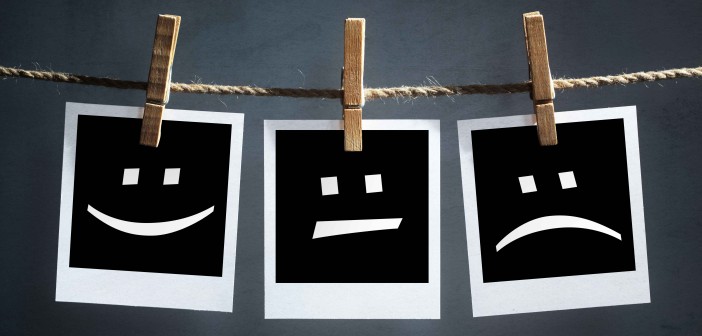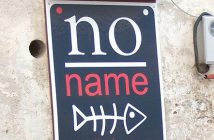Since it was first published back in 1974, the story of Ray Kroc and the MBA students has been a prime example of knowing what you sell.
Here’s the story. In 1974, Ray Kroc, the founder of McDonald’s, was asked to speak to the MBA class at the University of Texas at Austin. After a powerful and inspiring talk, the class adjourned and the students asked Ray if he would join them at their favorite hangout to have a few beers. Ray graciously accepted.
“What business am I in?” Ray asked, once the group all had their beers in hand. No one answered, so Ray asked the question again. “What business do you think I am in?”
The students laughed again, and finally one brave soul yelled out, “Ray, who in the world does not know that you’re in the hamburger business.”
Ray chuckled. “That is what I thought you would say.” He paused and then quickly said, “Ladies and gentlemen, I’m not in the hamburger business. My business is real estate.”
The story is not a joke. McDonalds has more prime locations that you can shake a stick at. Be honest, the focus is not the hamburger (it’s not that good).
Let’s take a look at what some of the big chains are actually selling:
McDonalds: They have a consistent product, plenty of locations, and it’s anywhere in the world.
Starbucks: Coffee? Nope, they sell the experience.
Amazon: Convenience.
Chili’s: Chili’s has a “Come joint the fun” theme as do the other restaurants in the family.
Target: We’re classier than Walmart, so come shop here. (Yes, this is a strategy.)
Now ask yourself: what do you sell? Every time I walk into a store I ask the same thing, “What are they selling?”
Just so you know, it’s not the stuff on the wall.
I was at one of my favorite stores Home Depot, where the current theme is “Let’s do this.” They are selling collaboration and teamwork so you feel empowered to attempt projects you otherwise would not try and spend more money in the process. It’s implied in the “Let’s” which is a contraction of “Let us.”
So when I go there and find a sales associate that knows absolutely nothing about the department they are in, it’s pretty disappointing. Unknowledgeable sales associates are what Walmart sells. “We have the LOWEST prices in town, but don’t expect much from the sales associates.” I left the store empty handed and went to Lowes, where they are selling “Cheaper then Home Depot, but we aren’t expected to know as much.” Found what I was looking for, never saw a sales associate, saved a few bucks, and then I left the store happy.
The point of the story is that those two themes need to line up (Home Depot and Lowes have pretty much the same stuff) but everything about the shopping experience is different.
Walmart and Target have pretty much the same merchandise, but Walmart sells bottom dollar, Target sells “We’re classier than Walmart.”
Grocery stores have the same merchandise, but most people only like “their store” and it’s not always the closest one.
Spend a few minutes and look at the merchandise on the shelf and ask yourself “What are you selling?” It will be some big concepts here are some examples:
- Price (Walmart)
- Experience (Starbucks)
- Expertise (A good hardware/trade store)
- Service (Ritz Carlton)
Just think of it like if you have a contractor work on your house. Yes, he is selling the work he does (the utility), but what you really buy is the fact you are confident he will complete the job, trust him at your house when you’re not there, things like that. In the end you bought confidence, trust, and utility of what he was originally selling.
They are really high level concepts but it sets the stage for the next part of the discussion.
My grandfather as the owner of a garage sold “reliability” because it was important to his customers. He was not the cheapest, and when people hammered him on the price he would encourage you to go to Joe’s down the street. His shop had plenty of work, and there was no need to compromise his business by slashing the price. Because then, in turn, he would have to pay the mechanics less, which would lead to lower class mechanics, which in turn lower quality work, which would command lower prices. Causation at its finest.
It’s that little restaurant I go to, that has hit or miss service because of staffing issues. The food is pretty good, but there are many nights decide it’s not worth “risking” bad service and I stay home instead. A positive customer experience is a prerequisite in the restaurant industry, and apparently, nobody told this restaurateur.
Let’s talk about the restaurant a little. Date night is a very real and important thing; it’s a necessity if you want to keep a relationship alive. As such, there is a growing trend to have date night not on the weekends, but mid-week instead; it’s simply not worth the hassle. This shouldn’t surprise you, and a lot of you are saying “We NEVER go out on Friday.”
The Customer’s point of view: “I have already rearranged my entire schedule to eat out on Wednesday, you had better make this a pleasant experience.” But the restaurant doesn’t hear this, are not paying attention and have their head in the sand. I’m the customer, so my job is to spend money and have a good time.
The restaurant says, “I make good food, I sell for a low price, that will keep the customers coming back. Because of this I can only afford to hire low cost staff, which may not be the best.”
I’m sure you see the disconnect here. Over the last year or so, the visual prosperity of the customers has declined, which is in indication that restaurant is beginning the spiral to a lower financial class, perhaps preparing to go under.
How do the dollars flow?
I am not a GAAP account, so I do this backwards:
This is a limited service restaurant, where you don’t have a waitress, you do some of the stuff yourself, but it’s not fast food either, it a mom and pop restaurant.
Restaurants are pretty much all fixed costs. You have so many people to be properly staffed and ready for what comes through the door, and you are paying them, and the food has variable costs.
I used to go there Wednesday night every two weeks, spent about $40, which worked out to $1040 a year. Food runs an average of 30% of total variable cost of $312 a year. Leaving $728 for the contribution, which helps dilute all the fixed costs, and is what really keeps the costs low (not skimping on labor costs).
Losing one customer like me costs this restaurant $728 a year, which not significant by itself, but it starts to add up.
Lose seven customers like me ($40/every other week) = 7 customers * $728 = $5096 a year lost contribution, that will be missed.
What does the staff cost?
You are already paying the staff, so we only need to look at the incremental change. For our example, we add $1 to the payroll per hour open. They only have a few employees, so it will work out to .25 – .33 or so per hour per employee. I know it’s not huge, but it doesn’t take a lot, just a gentle gradual change, “Here’s a little money, let’s get a little more effort.” But you need to manage to it.
Open 10 hours a day/ 70 per week means increasing the payroll $3640 a year, for a net improvement of $1456 towards the remaining fixed costs. It may not seem like much, but that was only a loss of seven customers, whom show up every other week, an over-all loss of 3.5 customers a week against base line. You would never notice those customers missing because that is such a small amount, but it had a big impact on the bottom line. Just imagine if they not only stopped the loss of seven bi-weekly customers, but because of these efforts gained seven bi weekly customers too, there are a few ways to look at it, but that additional $5096 would help the bottom line considerably.
So in this case what does the restaurant really sell? All restaurants have to have “good food” so that nets out. Why did I stop going? Slow service? They didn’t bus the tables fast enough? They stopped selling what I was buying a good night out—they were selling an okay night out.
So I’m going to ask you again: what are you selling? Does it align with how you sell it, market it, and promote it?
The contradiction doesn’t have to be huge to make a difference; it’s that one customer who didn’t get the right vibe in your store, that doesn’t come back; it’s spending a few bucks less, or coming by less often; it’s the difference between due diligence and winging it.
What are you selling?
I guarantee it’s not the merchandise on the wall or what it says on your business card.




